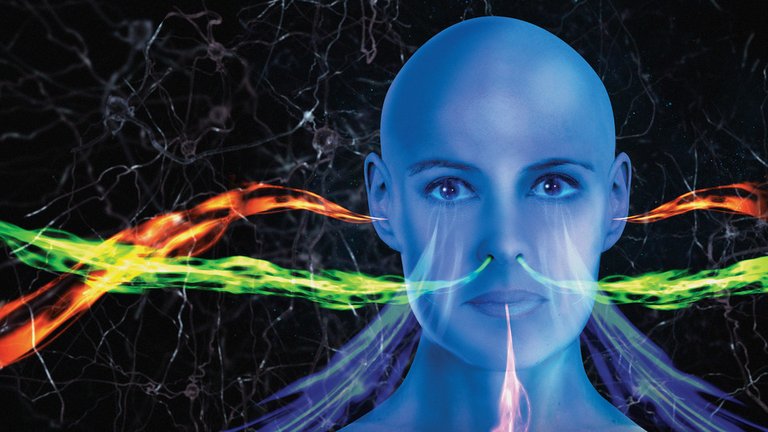
What kind of science myth still makes people fooled?
Many people (including me) think the myth is a fact because it is strengthened by educational institutions. Yeah, even the teaching materials we get in school are inseparable from the myth of science. How can!
Some myths are rooted in the minds of people through media affirmations, such as jargon in advertisements, magazines, books, to Hollywood movies. These sentences are repeated many times over several generations until they are embedded into the subconscious. Because it is often repeated, people simply agree, consider it a fact, and do not even bother to think if it is true or not. To the extent that there is someone who tries to straighten out the myths they believe, they just laugh, you think too far they say.
But, the myth itself begins from where? There must be a process whereby a concept is triggered before it becomes popular, moreover the myth of science.
Usually this mythical science was born from:
False Interpretation of Valid Scientific Findings
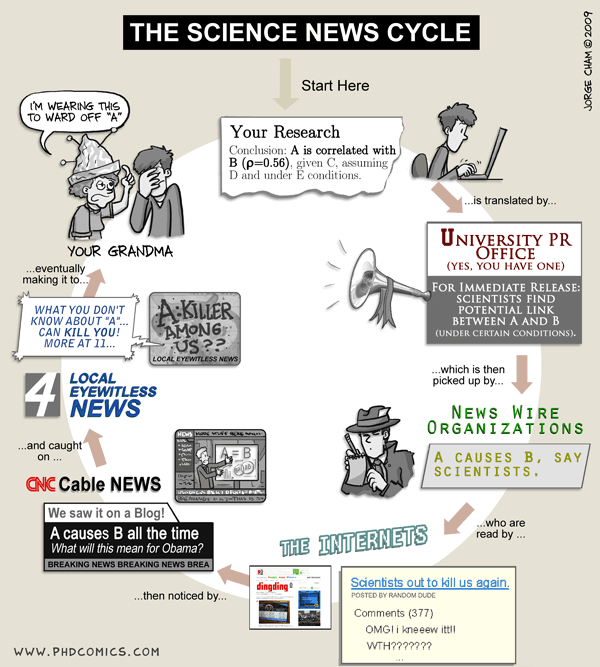
what the science journal says is different from what journalists publish to the public. Usually these journalists oversimplify the concepts presented in the journal to create bombastic headlines or draw conclusions only from sentence fragments. Because the journalists already raised it in the media, people already believe first. When scientists want to clarify the truth, the news even lost a scene with bombastic headlines in the beginning.
The Concept of Science that Has Expired
In fact, there have been recent research results that replace or refine the concept of this old science. But, it seems the public is too skeptical and lazy to think of new things, so consider the old one is still true.
The Concept of Which is Scientifically Sound
But, it turns out if we look at the method used, it is not scientifically true and logic of thinking. The sample may be less representative, not through peer review, the variables are incomplete, it should only be correlated, but it is actually said to have a direct relationship.
Well, in writing this time, I want to compile 10 myths of science that still make people deceived and trusted widely, maybe you are one of them. check it out!!
1. The Division of Right-Left Brain influences learning styles
This myth I put in the number 1 because I see very popular and impact is quite extensive. Teachers in schools too many who believe and affect their students. To some extent, swallowing this concept can be harmful.
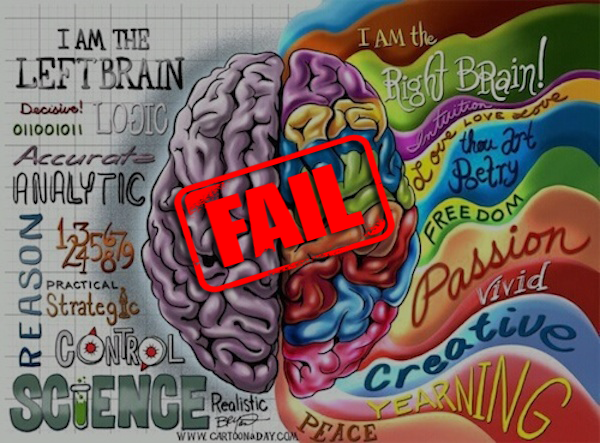
Just try to look at the following sentences.
"You're right brain type, I think it's more suitable to choose a social department"
"The majors of natural science suited to the left brain"
"I want to learn piano, but I'm a left brain kid, hmm I do not think I can learn music and art"
The above sentences seem to try to make a difference, forming a stereotyping that erodes price and confidence, to inhibit a person's potential. You like to judge yourself with labels that make yourself lazy to move. And we know, success is the resultant of hard work and consistent and positive mindset.
Worse, the above sentences are based on a false concept. Right-left brain dichotomy was born from a misinterpretation of a brain experiment (split brain experiment) on the brain in the 1960s. Although there is a distribution of work in each part of the brain, in fact, our right and left brain are never isolated from each other and always work together when doing any activity.
2. 5 Seconds Rule
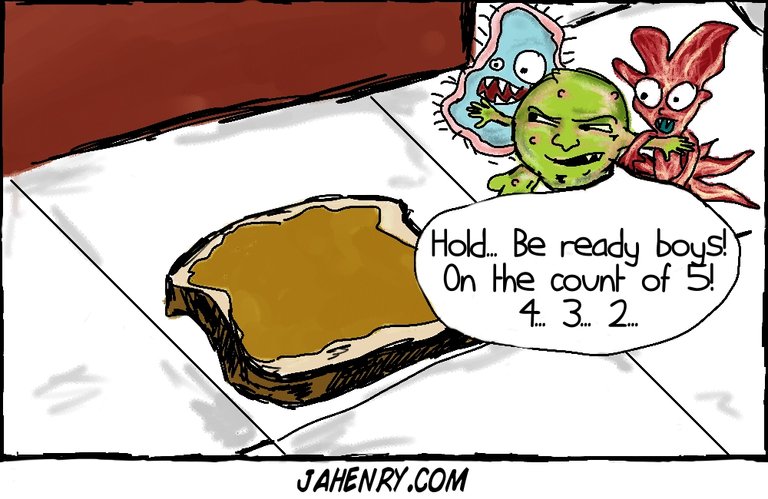
Usually if the food falls, then it is taken in seconds. Keep going back to the mouth. "5 Seconds Rule" is the belief that it takes 5 seconds for bacteria on the floor to contaminate food that falls on the floor. If you can take food that falls off the floor in less than 5 seconds, the food is still good to eat because the bacteria have not had time to "touch" the food. "5 Seconds Rule" is no more than a suggestion so we do not waste food.
And the fact is, little contact with the floor, even 1 second, bacteria on the floor directly contaminate the falling food. The study showed no significant difference in the amount of bacteria in food that fell to the floor in 2 seconds with the number of bacteria in the food falling to the same floor for 6 seconds. Yes, this simple thing there is also a special research, and the researchers get a Nobel Prize. so amazing ..
3. Humans only use 10% of brain capacity
This one brain myths say that human beings only take 10% of their brain capacity, 90% more still not utilized optimally. Usually this myth is also accompanied by similar myths, such as "Einstein was able to use his brain 16%, other humans only 10%".

If your brain is only 10% of it, you will not be able to read my writing. The fact that you are more refreshed in front of your laptop or gadget and read this article, is proof that your brain is fully functional. If only 10% of your brain works, you've had a stroke.
Similar to previous brain myths, this myth is also born from a misinterpretation of a science experiment. This myth can be popular because it seems to give (fake) expectations to students who are bad or mediocre value that there is an instant way to activate 90% other parts of the brain. Come on, I'm sure a genius kid does not have anything like this. As I mentioned before, hard work is absolutely essential to achieve what we want. Everything has its price. Einstein says, "I have no special talent, I am only passionately curious."
4. Tongue has zones to taste a certain flavor
This material must have been obtained when studying biology at school. This idea states that the tongue as the taste buds have a certain area to taste different flavors.
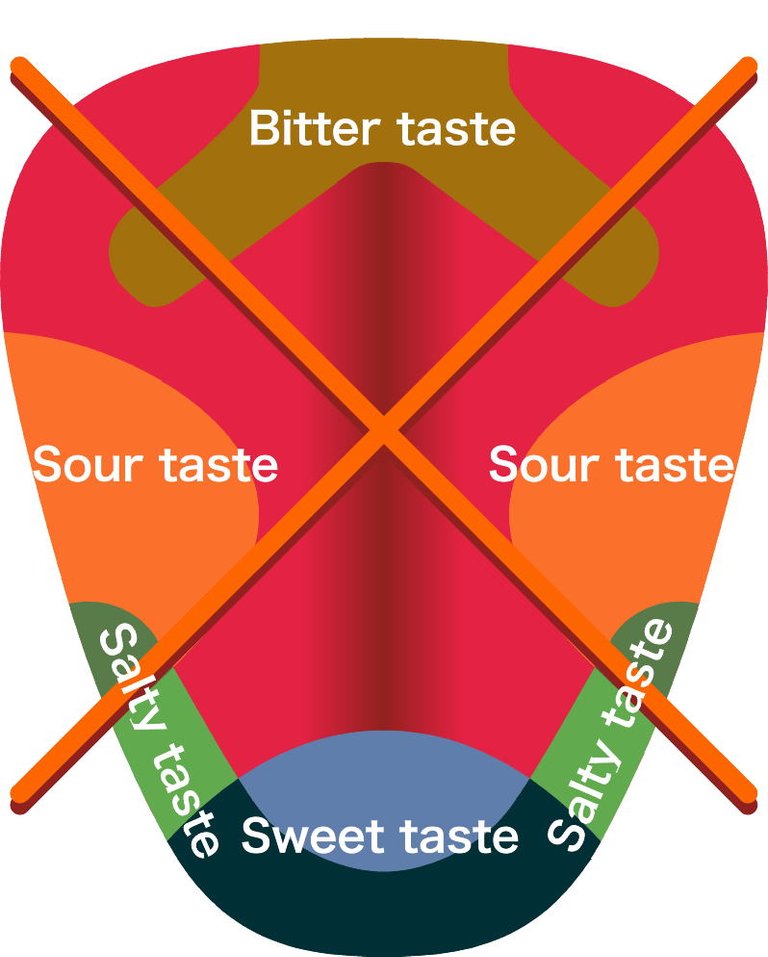
Where did this myth come from? this concept comes from a research based on a theory that is not strong. In 1901, a German scientist conducted a study of tongue sensitivity on four common tastes (sweet, sour, salty, bitter). It was found that there was a time difference on the portions of the tongue to detect the taste of a nutrient. But, the time difference is not significant. For some reason, there is a simplification that this time difference is said to be a difference in sensitivity.
In fact, although one part of the tongue can detect a taste a little faster, all parts of the tongue can taste all kinds of flavors with the same level of intensity and sensation.
It's actually very easy if we want to prove the taste map on the tongue is wrong. Yes just try put salt on the front end of the tongue, we can taste the saltiness. Put sugar on the base of the tongue, we can still feel the sweet taste.
Various researches and decontructions of understanding of the taste map on tongue that was born a century ago is already widely done. The latest is a study in 2014 that managed to reveal that there are 8000 sensors spread across the tongue can feel a variety of flavors evenly, not per part.
What remains a mystery is why the concept that already expired is still taught in school. even in America too, this material is still entered into teaching materials.
5. Mid Brain Activation
According to the description of the Midbrain Activation program, the midbrain of human beings is generally still inactive. This program offers services to enable the midbrain with cutting-edge technology to improve the concentration, social, physical, creativity, and right and left brain balance while this is also a myth.
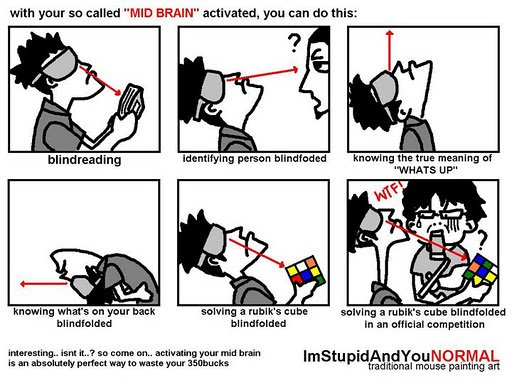
This one myth is not born because of a misinterpretation of scientific findings or science expired. This myth is born from the concept of confess scientific, but in fact not based on a valid basic science of the brain.
The midbrain is the bridge of the forebrain and the back of the brain. function to control the response of vision, hearing, eyeball movement and pupil dilation, motor movement, alertness, and regulate body temperature. From childhood, our midbrain is functioning. Easy to know whether the middle brain program is true or not. In accordance with its function, if true our middle brain is still "sleeping" or not yet active, meaning the movement of the eyeball so abnormal, got Parkinson's disease, until stroke.
more excited, the Central Brain Activation program is accompanied by fantastic claims, such as after a child is brainwashed in his midbrain, he can see with his eyes closed and genius in a matter of days. Well, how ordinary people are not interested, if not in an instant way like this. Moreover, parents who really crave his son to be a genius.
Btw, would love a little note about the picture above. Not that the cuber (cube rubik players) can not finish the rubik with eyes closed yes. Completing rubik's cube with closed eyes can indeed be dilakuin without ngintip. Hundreds of thousands of cubers in the world already prove it could even have its own competition. Problem cheats are also there, but the amount is not significant and the caught cheating already processed officially (banned from the official competition, etc.). They can do that by learning the pattern of the rubik's cube
6. Human (only) has 5 senses
We are taught in the school bench if humans have 5 senses, namely sight, hearing, smell, touch, and taste. But, how can I feel the balance of my body, acceleration when I'm running, to feel the temperature rises when I have a fever?
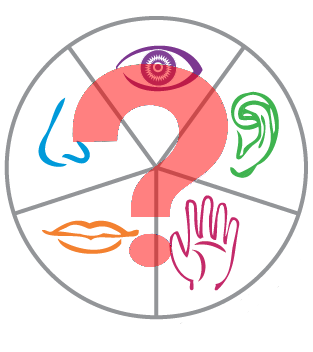
The traditional idea of "Man only has five senses" is actually just a simplification in the school bench since Aristotle's time. The five senses have their own organs that we can easily observe everyday. In a way, these 5 senses are the biggest. But sometimes, ordinary people think that humans have only 5 capacities to make sense of their environment. The dream of a superhuman makes some people think there is another sense capacity that we can uncover, like the sixth sense, which is nonsense.
But let's first clarify the definition of the senses here. The sense definition I use here is the physiological capacity of an organism to send information to the brain about the state of the environment and the body. Using this definition means the human senses can be more than 5. There are parts of our body that have the ability to sense pressure, itching, temperature, body position (proprioception), muscle tension, nociception, equilibrioception, in the body (kemoreceptors), thirst, hunger, time, and others. Sometimes there are also scientists who use a more detailed definition, where for example taste capacity taste can still be breakdown again so the receptors to taste salty, sweet, sour, etc.
Saying if humans only have 5 senses, it's like underestimating the work of our complex body.
7. The chemical is dangerous
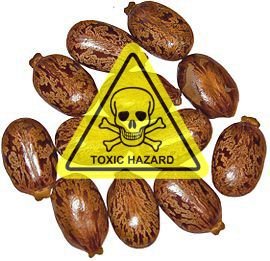
Well, this myth seems to have been quite rooted in the minds of the people. Thanks to the advertisements of traditional and herbal products that try to reduce the dominance of modern manufacturers' products. This myth can be rooted in Indonesian society, especially, because (I see) 2 factors, namely (1) Indonesian cultural background that rely on anything directly take from nature before familiar with modern product manufacturer and (2) sometimes modern product manufacturer price is rather expensive , does not fit most of the pockets of Indonesian society. This is a business opportunity for producers of "herbal" and "natural" products. start big companies launching products that follow confess "herbal".
Though the negative image on "chemicals" and the positive image on the "herb" was misleading. In fact, all the things around us are chemicals. Our entire body is composed of millions of molecules and chemical compounds. Things that lo use every day, starting from the table, teflon frying, clothes, sampe electronic devices, also formed from chemicals. In fact, everything that comes from nature, also chemicals. The water you're drinking, the air you breathe, the fire you're on, to a grain of rice you eat, the chemicals, right ?!
Chemicals can be dangerous, no matter the chemicals we can directly from nature or already through the process of the factory (which anyway also comes from nature). A chemical may be harmful or beneficial depending on the manner and dose of its use. In addition, herbal products that claim themselves to be directly acquired from the wild can also be harmful, if not through the process or health standards established by official government agencies.
8. Take antibiotics when fever or flu, to make a better soon
Is there any of your family who rely on antibiotics when minor ailments?
Well, if there is, you should warn them that what they do can be wrong. Antibiotics are derived from the words "anti" and "bio" (life). Means used to kill something alive. Antibiotics, by definition, kill bacteria. Well, cough, earache, sore throat, runny nose, flu, and mild fever are generally caused by a virus. Antibiotics can not be used to treat diseases caused by viruses. Although in some cases the disease caused by this virus, sometimes potentially "invite" the bacteria, so that in certain diagnoses are needed antibiotics.
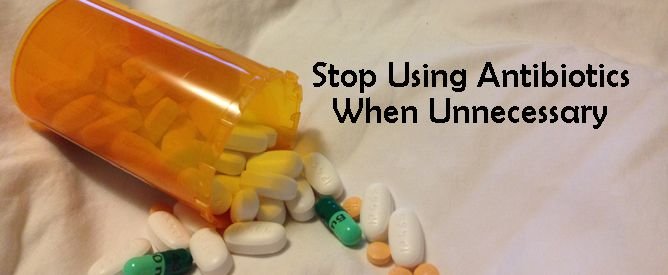
But in general, what I want to emphasize here is the false perception that antibiotics are "cure-all-disease" that can cure almost all minor ailments, including those caused by viruses. Why? Try to remember again the class 10 Biology lesson. The virus is not a living thing. Viruses have genetic material, but can not perform life activities, such as metabolism to reproduction, without the help of the host. The virus is in the boundary between the dead and the living things. So do not connect using antibiotics to overcome the virus?
take antibiotics for purposes that do not conform to their basic functions or prescribed doses may cause other common bacteria in the body to become resistant to the drug. This can lead to the formation of "super bacteria" that cause a disease much worse than the previous disease. When given antibiotics at the same dose, they no longer work. Need antibiotics with a higher dose again.
Antibiotics can not be bought carelessly in pharmacies without a doctor's prescription. However, unfortunately, there are sometimes irresponsible doctors who prescribe antibiotics for patients with mild illness. On the other hand, sometimes there are also recalcitrant patients who continue to take antibiotics without a prescription and a diagnosis from a doctor. In this context, it is important for patients to understand why antibiotics can not overcome the virus and also actively ask the doctor if the diagnosis results are potential bacterial growth, because if for no good reason, antibiotic consumption is potentially bad for long-term health.
9. Drinking milk regularly can reduce the risk of osteoporosis
since childhood, we've been given "doctrine" so diligent to drink milk because it is a source of good calcium intake for bone health.
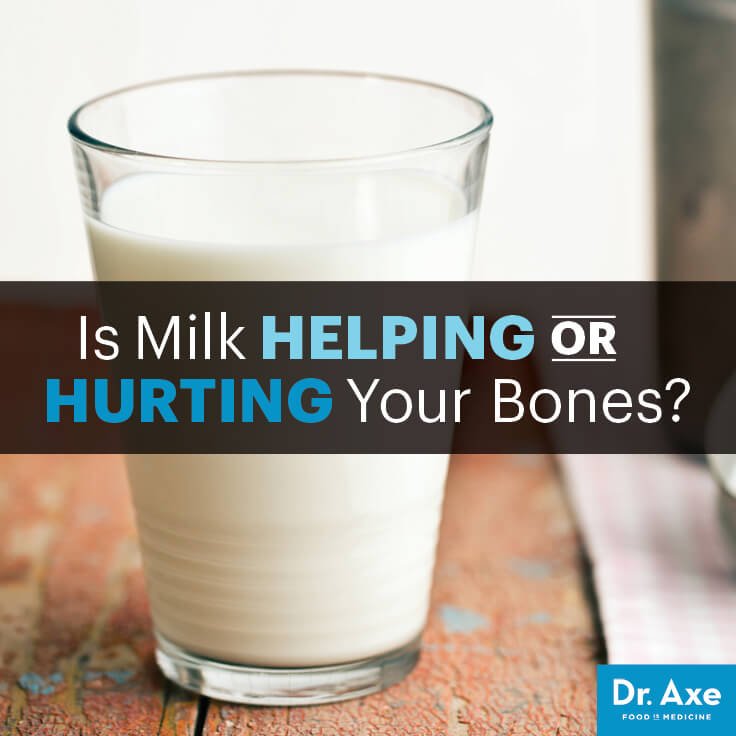
Osteoporosis or bone loss is a condition of weakening of the bone due to an imbalance between the formation of new bone cells and bone damage. People usually lose bone cells as they get older.
Consuming enough calcium and maximizing bone reserves while the bones are actively growing (up to age 30) does provide an important foundation for the future. But this does not prevent bone damage later in life. Bone damage over time is the result of many factors, including genetic factors, lack of physical activity, and decreased levels of hormones in the body.
So, reducing the risk of osteoporosis do not get stuck on drinking milk and consumption of calcium alone. Many studies have found that there is no association between high calcium intake and a lack of fracture risk (see The Journal of Nutrition and NCBI). But, lack of calcium intake is certainly not good as well. Simply, do not be too high, do not be too low.
The source of calcium does not really exist in milk. Simply relying on milk as a source of calcium can pose other risks, such as those who are lactose intolerant, dairy products are high in saturated fats that are risk factors for heart disease, and high levels of milk digestion galactose can damage the ovaries and can cause ovarian cancer. There are many other sources of calcium besides milk, such as green vegetables (mustard, broccoli, spinach) and nuts.
Other factors should also be considered in an effort to reduce the risk of osteoporosis. In addition to consuming enough calcium, we are also recommended to suffice enough vitamin D (adequate sunlight exposure or with supplements), vitamin K (in green vegetables), and weight training regularly. Like walking, dancing, jogging, weights, climbing stairs, badminton / tennis, and hiking. This kind of physical activity puts pressure on the bones that can maintain bone density throughout life.
10. Blood type affects personality
Well, this is also one of the myths that often appear in Instagram, Path, and so on. The story, the blood type affects a person's personality. Actually this idea is not much different from the personality type based on the zodiac.
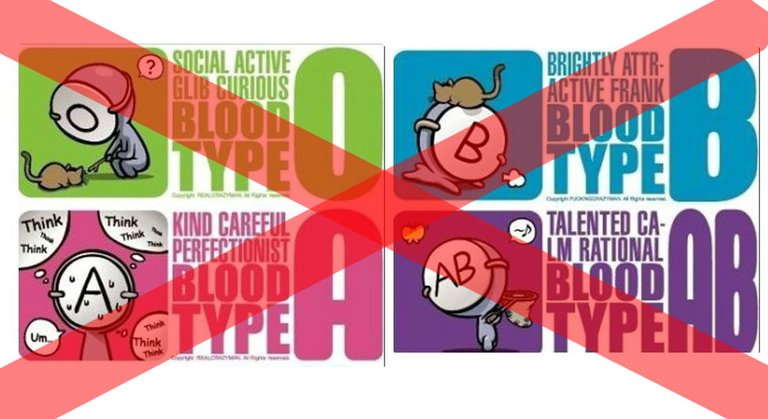
it's easy to know if this is logically and biased. there are many Personality and human character. how can diverse characters be divided into only 4 types of classes? He said blood type AB is a genius and likes to generate brilliant ideas. But, I know many people who are genius but not AB blood group.
In addition, the nature of a person is dynamic, can change over time, it could be due to the process of maturity or a particular event in life. He said, blood type O can not be on time. For example Albert O blood type, often not on time. But because then he entered the world of work and realize that if sluggish it can affect his career, he learned to be on time and eventually could be a disciplined person. Well, can we mention albert has changed his blood type?
The bias is if there is a type of personality in the blood type cartoons that fits in with the character of your self or your friends, the suit is then shared in the timeline socmed, "wow that's right, my blood type B, really like bluntly". But if there are characters in those cartoons that do not suit him, he just ignores them, and is not taken seriously. And, it is done almost most people who like to read the type of personality through blood type. Hence, this system can be popular.
But, somewhat different from the zodiac forecast, this type of personality per blood type has a little marinade. Since it is divided by blood type, people think it is more accurate because it is related to human biology. In fact, in grade 8 of junior high school or 11 high school, we learn that the blood type is determined from the presence or absence of certain antigens on the surface of red blood cells that can trigger an immune response if we receive blood from a class incompatible with our blood. On the other hand, personality or human nature is determined by the arrangement of genes present in every cell of the human body. So, basing blood type as a determinant of personality is wrong is not it?
Special research has been done and found that there is no relationship between blood type with personality someone.
That's just 10 of many science myths in everyday life. Somewhat sad if our people spend so much money for things that have no valid basis and scientifically proven. These myths can we leave slowly if a generation learns right, not just looking for value or rely on an instant way. They learn with utmost respect for science, the importance of critical thinking, and hard work to create change or innovation of a better life.
Reference:
Figure 1
Figure 2
Figure 3
Figure 4
Figure 5
Figure 6
Figure 7
Figure 8
Figure 9
Figure 10
Figure 11
Figure 12
http://www.therichest.com/rich-list/most-popular/10-popular-science-myths-debunked/3/
http://www.discovery.com/tv-shows/mythbusters/videos/five-second-rule-minimyth/
http://en.wikipedia.org/wiki/Tongue_map
http://science.howstuffworks.com/science-vs-myth/everyday-myths/10-false-facts1.htm#page=10
http://www.todayifoundout.com/index.php/2010/07/humans-have-a-lot-more-than-five-senses/
http://en.wikipedia.org/wiki/Sense
http://www.iflscience.com/health-and-medicine/common-science-myths-most-people-believe
http://all-that-is-interesting.com/science-myths/sciencemythsantibiotics
http://www.hsph.harvard.edu/nutritionsource/calcium-full-story/
http://blogs.scientificamerican.com/guest-blog/2011/02/15/you-are-what-you-bleed-in-japan-and-other-east-asian-countries-some-believe-blood-type-dictates-personality/
Source: https://www.merdeka.com/pendidikan/10-mitos-sains-yang-masih-banyak-dipercaya-orang.html
Not indicating that the content you copy/paste is not your original work could be seen as plagiarism.
Some tips to share content and add value:
Repeated plagiarized posts are considered spam. Spam is discouraged by the community, and may result in action from the cheetah bot.
Creative Commons: If you are posting content under a Creative Commons license, please attribute and link according to the specific license. If you are posting content under CC0 or Public Domain please consider noting that at the end of your post.
If you are actually the original author, please do reply to let us know!
Thank You!
I like this post. Thanks for putting it together! Yeah, that 5 second rule gets us every time, but we have to keep using it! I probably used it a few times today myself...or with my kids. :) Ha.